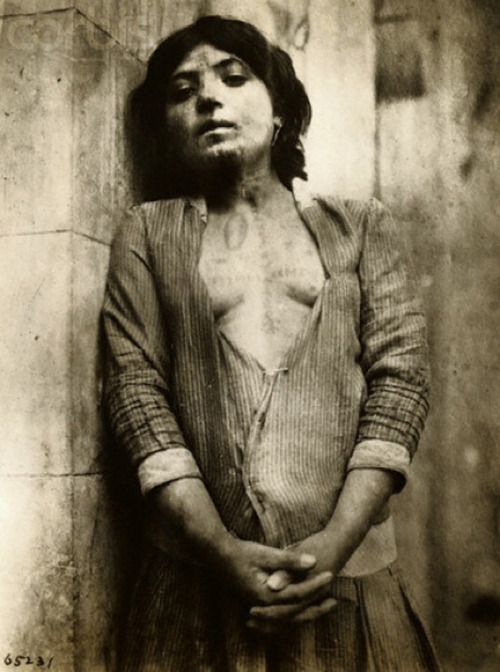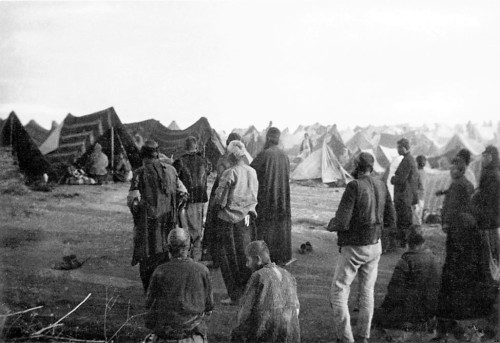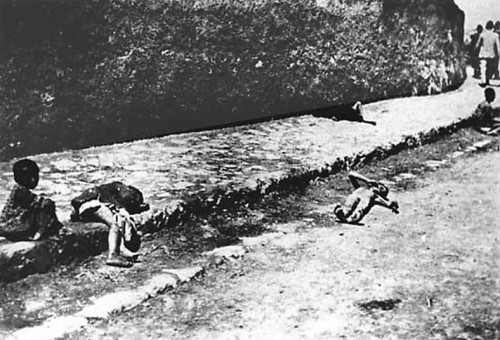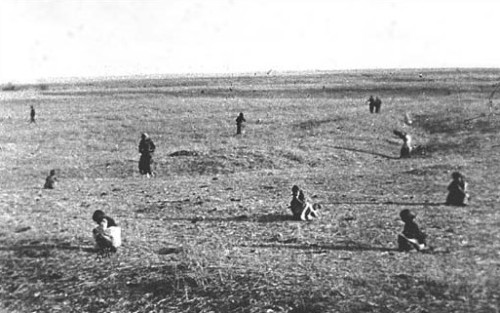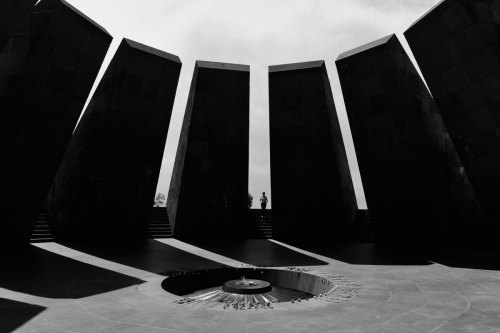#greek genocide
Armenian girl with identification scaring on chest and face, 1919.
Credit: Underwood & Underwood/Corbis
In the 1920’s thousands of Armenian girls and women managed to escape the Armenian Genocide by fleeing to Syria. Armenian girls were kept in slavery and forced into prostitution. In order to identify them and prevent their escape, their Turkish pimps tattooed their face, arms and chest.
The girl in the photo had just been rescued from a Turkish house and was cared for by the Y.W.C.A workers at Aleppo.
Post link
The photos of Armin T. Wegner capture the bleak struggle to survive facing Armeniandeportees. As a second-lieutenant in the German army stationed in the Ottoman empire in April 1915, Wegner took the initiative to investigate reports of Armenian massacres. Disobeying orders intended to stifle news of the massacres, he collected information on the genocide and took hundreds of photographs of Armenian deportation camps, primarily in the Syrian desert.
Wegner was eventually arrested, but not before he had succeeded in channeling a portion of his research material to Germany and the United States through clandestine mail routes. When he was transferred to Constantinople in November 1916, he secretly took with him photographic plates of images he and other German officers recorded.
Photographs in order of appearance by Armin T. Wegner.
1. 1915, Armenian deportees living in the open desert under makeshift tents. Central figure with long black robe and cap is an Armenian priest, probably performing burial rites for the dead a three men behind are kneeling while others are standing next to and behind the priest. Clothing of some deportees is already worn to rags. Location: Ottoman empire.
2. 1915-1916 Abandoned and murdered small children of the (Armenian) deportees, Three are dead including stripped boy in gutter. Location: Ottoman empire.
3. 1915-1916, murdered Armenian male adult lying in a ditch as children watch the corpse. Location: Ottoman empire.
4. 1916, Scattered deportees in a desert wasteland, individually foraging as their only source of food. There is no shelter, water, or habitation in sight. Location: Ottoman empire
Post link
Հայոց ցեղասպանության զոհերի հուշահամալիր
Armenian Genocide memorial complex
Armenia’s official memorial dedicated to the victims of the Armenian Genocide. Built in 1967 on one of three hills of Tsitsernakaberd. Litterarly meaning “swallow’s fortress”
Every year on April 24 thousands of Armenians and visitors from around the world gather at the memorial to remember the 1,5 million Armenians who perished during the Genocide. Fresh flowers are laid around the burning flame in the middle of the complex out of respect. Over the years many world leading politicians, religious figures, artists, musicians and athletes have visisted the memorial.
The construction of the monument began in 1966, during Soviet times, in response to the 1965 Yerevan demonstrations during which one hundred thousand people demonstrated in Yerevan for 24 hours to commemorate the 50th anniversary of the Genocide. A highly confidential letter was sent to the Presidium of the Communist Party of Armenia by three armenian politicians and scientists, where they made a series of proposal to commemorate the 50th anniversary of the genocide. Point 8 said:
“To build the memorial of the victims of the Armenian people in World War I on account of the income of the population. The memorial must symbolize the rebirth of the Armenian people.”
The 44 meter stele symbolizes the national rebirth of Armenians. Twelve slabs are positioned in a circle, representing the twelve lost provinces in present day Turkey. In the center of the stone slabs at a depth of 1,5 meters there is an eternal flame dedicated to the 1.5 million people killed during the Armenian Genocide.
Along the park at the memorial there is a 100-meter wall with the names of towns and villages where massacres and deportations are known to have taken place. On the rear side of the commemoration wall, plates have been attached to honor persons who committed themselves to relieving the distress of the survivors during and after the genocide (among others: Johannes Lepsius, Franz Werfel, Armin T. Wegner, Henry Morgenthau Sr., Fridtjof Nansen, Pope Benedict XV, Jakob Künzler, Bodil Biørn).An alley of trees has been planted to commemorate the genocide victims.
To this day day no turkish state official has visited Tsitsernakaberd and it continues it’s Genocide denial and culture.
TheArmenian Genocide Museum-Institute (Հայոց ցեղասպանության թանգարան-ինստիտուտ) was opened in 1995 next to the memorial.
Post link
The distribution of Armenians (in red) and Greeks (in purple), in 1900 CE and in 2000 CE. The mass movement of populations were the result of the Greek GenocideandArmenian Genocide; both began during World War I under the Ottoman Empire, and continued into the early 1920s under the new state of Turkey.
Interesting note: in 1900, Greek and Armenian populations bordered each other in two places, in eastern Turkey and around Constantinople
Post link
These images depict the massacre, looting, and burning of Phocaea in June 1914, committed by Ottoman irregular troops in one of the earliest stages of the Greek genocide. French eyewitness, Félix Sartiaux (1876-1934), gave refuge to hundreds of fleeing Greeks and published his testimony in Le Sac de Phocée: et L'expulsion des Grecs Ottomans d'Asie-Mineure en Juin 1914:
“Just as our homes are being emptied of refugees from the previous night, they begin filling again with new arrivals who feel secure from the violence, only under our roof. Their lives have been saved due to the sole fact that they abandoned everything and fled. The majority are wearing torn clothing, many of them are covered in blood. Due to the ferocity of the assault, they were not even able to take some bread with them for the road. Wealthy notables from the region fled bare-footed, the bandits even taking their shoes. The children cry as they search for their parents. We don’t reveal to a mother that her two children have been murdered. We find a newborn child on the street but we are unable to find its mother so we give it to another woman who is breastfeeding her own child. Women approach us in desperation and beg us to find their husbands or their fathers, or their daughters who were raped or abducted. The saddest moment is when we have to farewell our good old friends. Some embrace me in tears and offer me their eternal gratitude. Others are able to control their emotions and offer me both their hands, while their sweet eyes and timid gaze lock into my own gaze, and pierce the depth of my soul in a silent and final goodbye.“ –Via GreekGenocide.net
Post link

